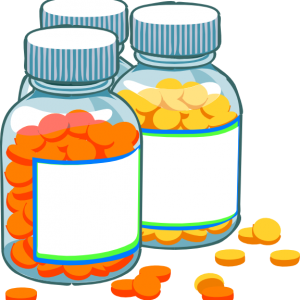
Trichotillomania is a hair pulling disorder that was first described in the 1889. There can be some ritual behaviors connected with this condition. Rolling the hair, running the hair over one’s lips, and pulling out specific hairs based on color, length and texture are all possible behaviors. (1) This condition is quite tricky to treat. There are several treatment options to consider. Some examples of treatments include comprehensive behavior treatment, and medication. (2–5)
Habit reversal training (HRT) is a type of comprehensive behavior therapy. This therapy focuses on one’s feelings, thoughts and behavior. Examples of items included in HRT are awareness training, reaction training and social support. When this type of therapy was evaluated in a large scale behavioral outcome study there was over a 90% reduction in hair pulling. (5)
There are also several different types of medications that are currently being tested for safety and efficacy. An example of a drug that has been looked at in the treatment of Trichotillomania is N-acetylcysteine. When trichotillomania patients were given this drug, they showed decreases in hair pulling symptoms with 56% of patients that were “much or very much improved”. (4) A possible issue in treating Trichotillomania with medication is side effects. Examples of side effects include constipation, dry mouth, and tremors. (6) Caution should be taken as anxiety and depression are already linked to this condition. (7)
The amount of options to try might seem overwhelming but with a discussion with your doctor and checking out some resource centers (such as Trichotillomania Learning Center www.trich.org) a right treatment plan can be made. Families and friends can play a major role as well in your treatment success. Using effective communication to correctly inform family members of your condition can be a great start on your way to recovery. Please stay tuned for a follow up blog on trichotillomania in children.
Article by: Sarah Versteeg MSc, Mediprobe Research Inc.
- du Toit PL, van Kradenburg J, Niehaus DJ, Stein DJ. Characteristics and phenomenology of hair-pulling: an exploration of subtypes. Compr Psychiatry. 2001 Jun;42(3):247–56.
- Falkenstein MJ, Mouton-Odum S, Mansueto CS, Golomb RG, Haaga DAF. Comprehensive Behavioral Treatment of Trichotillomania: A Treatment Development Study. Behav Modif. 2015 Dec 7;
- Ducasse D, Fond G. [Acceptance and commitment therapy]. L’Encéphale. 2015 Feb;41(1):1–9.
- Grant JE, Odlaug BL, Kim SW. N-acetylcysteine, a glutamate modulator, in the treatment of trichotillomania: a double-blind, placebo-controlled study. Arch Gen Psychiatry. 2009 Jul;66(7):756–63.
- Azrin, N.H, Nunn R.G., Frantz, S. E. Treatment of hairpulling (Trichotillomania): A comparative study of habit reversal and negative practice training. J Behav Ther Exp Psychiatry. 1980 Mar;11(1):13–20.
- Rothbart R, Amos T, Siegfried N, Ipser JC, Fineberg N, Chamberlain SR, et al. Pharmacotherapy for trichotillomania. Cochrane Database Syst Rev. 2013;11:CD007662.
- Teng, Ellen J, Woods, Douglas W, Marcks, Brrok A, Twohig, Michael P. Body-Focused Repetitive Behaviors: The Proximal and Distal Effects of Affective Variables on Behavioral Expression. J Psychopathol Behav Assess. 2004 Mar;26(1):55–64.












